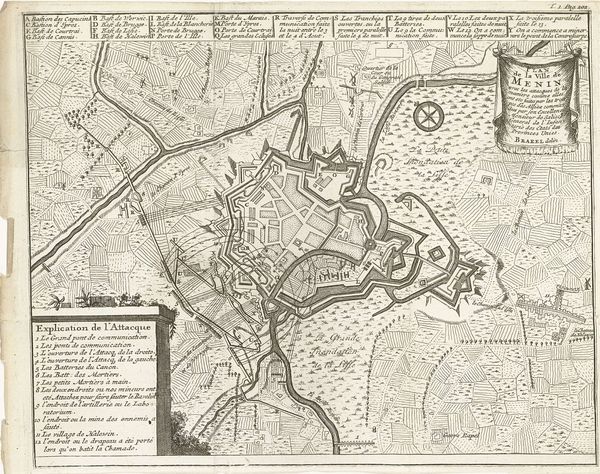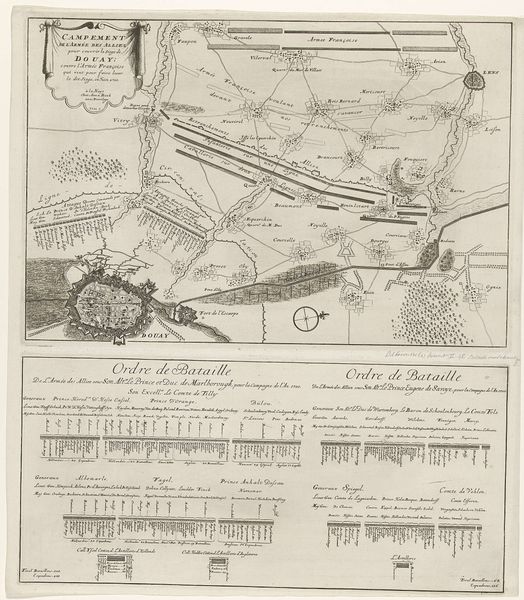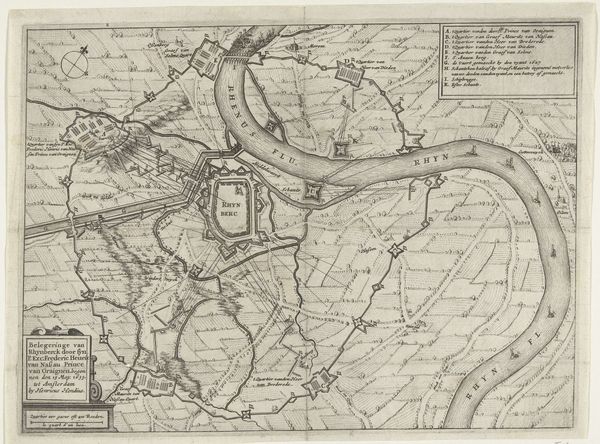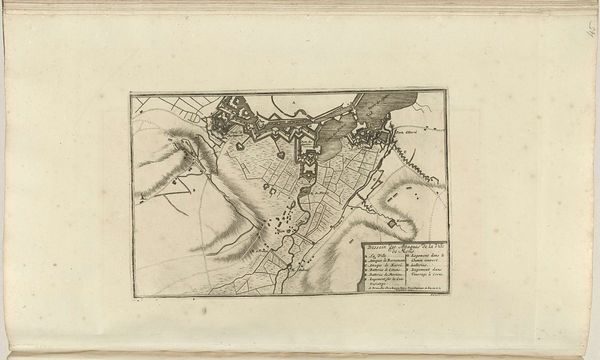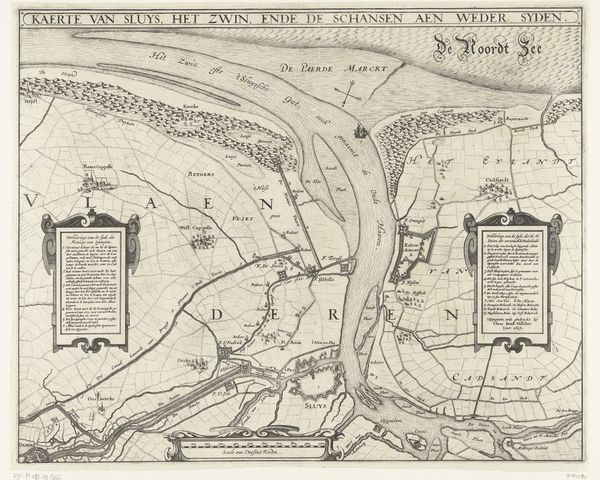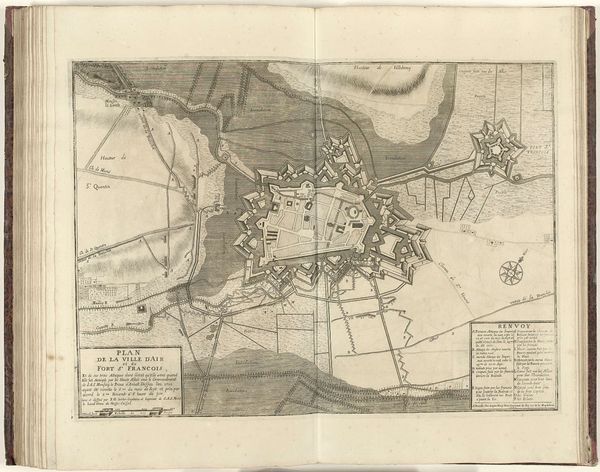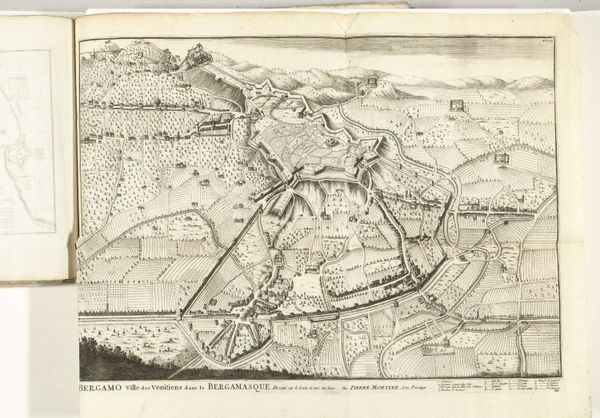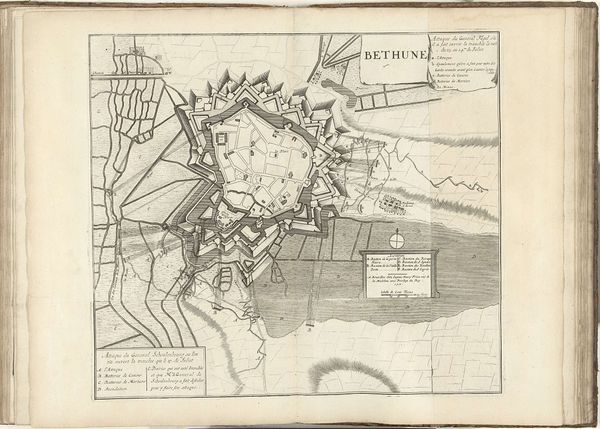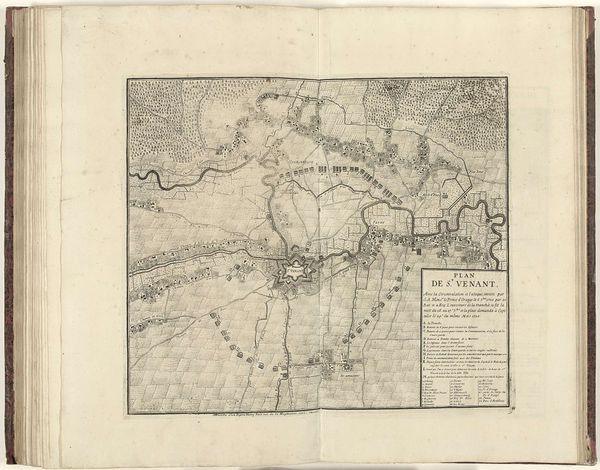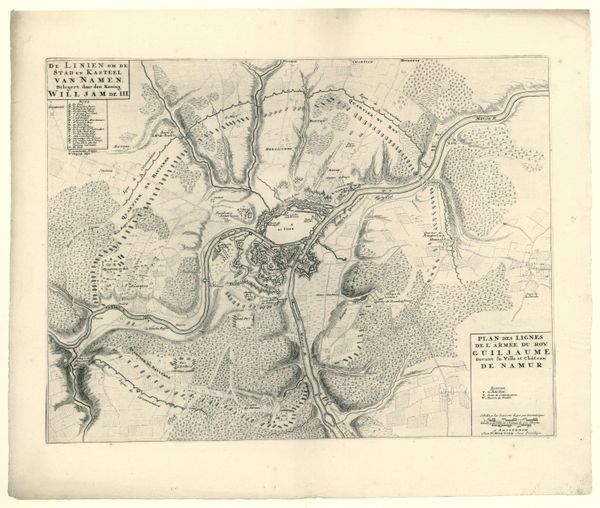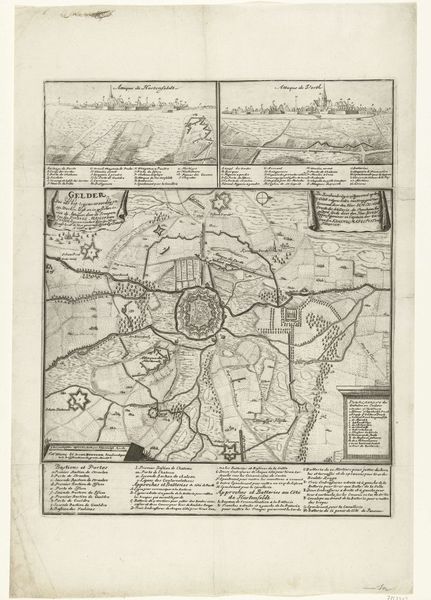
print, engraving
# print
#
history-painting
#
engraving
Dimensions: height 353 mm, width 345 mm
Copyright: Rijks Museum: Open Domain
Editor: We're looking at an engraving titled "Slag bij Ramillies, 1706", which translates to "The Battle of Ramillies, 1706," created anonymously. It's like looking at a meticulously planned game board, but it depicts a real historical battle. What do you make of it? Curator: It's funny how violence transforms into abstraction. Look at this, a chaotic clash, now rendered with an almost sterile precision. It's less about the glory of war and more about, perhaps, the *illusion* of control in war. Do you feel that coldness too, that separation? Editor: I do. It's not as romantic as paintings of soldiers charging; it's more like an operational map. There's no emotional charge. Curator: Precisely. It invites us to question the 'objectivity' of historical records. Someone, after all, decided what to include, how to represent it, turning flesh and blood into these neat little symbols. Almost makes you wonder what narratives were conveniently omitted, doesn’t it? Editor: It does. I'm curious about the details—all the little squares and symbols. What do they represent, and how did they choose what to highlight? Curator: Exactly. Someone chose what mattered—the positions, the numbers. History distilled to logistics. What about the mud? The fear? The actual sound of cannons? Silenced, neatly filed away. It's beautiful and chilling at the same time. It's not a transparent window to the past, is it? Editor: Not at all. I appreciate seeing it as a constructed account of the event, instead of just an illustration of something that already happened. Curator: I think both the precision of the engraving, and its omissions, help make visible a very *particular* way of understanding events. And it is interesting for its artistry and also its limitations, don't you agree?
Comments
No comments
Be the first to comment and join the conversation on the ultimate creative platform.
